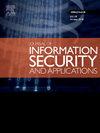IDS-DWKAFL: An intrusion detection scheme based on Dynamic Weighted K-asynchronous Federated Learning for smart grid
IF 3.7
2区 计算机科学
Q2 COMPUTER SCIENCE, INFORMATION SYSTEMS
Journal of Information Security and Applications
Pub Date : 2025-02-13
DOI:10.1016/j.jisa.2025.103993
引用次数: 0
Abstract
With the widespread application of 5G and smart terminals in power systems, malicious traffic and customer privacy issues have become critical security problems that urgently need to be addressed. Currently, intrusion detection systems (IDS) using distributed approaches such as Federated Learning (FL) are primarily employed. However, this method often assumes stable network connections and fails to account for the significant heterogeneity caused by the large number of diverse devices in real-world scenarios, which significantly increases the training time of the mode. To overcome these challenges, this paper proposes a Dynamic Weighted K-Asynchronous Federated Learning (DWKAFL) IDS scheme that determines aggregation eligibility and order based on gradient quality and staleness, thereby improving the efficiency and performance of IDS training in heterogeneous power system scenarios. Specifically, we introduce a node selection algorithm that considers both the quality and staleness of gradients uploaded by clients, as well as their communication capabilities, to dynamically select appropriate nodes for global aggregation. Additionally, we propose an Adaptive Gradient Storage Bucket (AGSB) approach, which stores gradients based on their arrival times and optimizes the timing of aggregation tasks, minimizing the impact of user dropouts on system performance. For the experiments, three publicly available intrusion detection datasets were converted into grayscale maps. The experimental results show that the DWKAFL-IDS scheme demonstrates stronger convergence and higher accuracy during training, achieving approximately 92% accuracy on the CICIDS2017, 91.3% accuracy on the UNSW-NB15 dataset and 85% on the NSL-KDD dataset. Notably, in scenarios with highly heterogeneous devices, the scheme exhibits more significant advantages compared to existing methods.
IDS-DWKAFL:一种基于动态加权k -异步联邦学习的智能电网入侵检测方案
随着5G和智能终端在电力系统中的广泛应用,恶意流量和客户隐私问题已成为迫切需要解决的关键安全问题。目前,入侵检测系统(IDS)主要采用分布式方法,如联邦学习(FL)。然而,这种方法通常假设网络连接稳定,无法考虑到实际场景中大量不同设备导致的显著异构性,这大大增加了模型的训练时间。为了克服这些挑战,本文提出了一种基于梯度质量和过时性确定聚合资格和顺序的动态加权k -异步联邦学习(DWKAFL) IDS方案,从而提高了异构电力系统场景下IDS训练的效率和性能。具体来说,我们引入了一种节点选择算法,该算法考虑了客户端上传的梯度的质量和过时程度,以及它们的通信能力,以动态选择合适的节点进行全局聚合。此外,我们提出了一种自适应梯度存储桶(AGSB)方法,该方法根据梯度的到达时间存储梯度,并优化聚合任务的时间,最大限度地减少用户退出对系统性能的影响。在实验中,将三个公开可用的入侵检测数据集转换为灰度图。实验结果表明,DWKAFL-IDS方案在训练过程中表现出更强的收敛性和更高的准确率,在CICIDS2017上达到约92%的准确率,在UNSW-NB15数据集上达到91.3%的准确率,在NSL-KDD数据集上达到85%的准确率。值得注意的是,在设备高度异构的情况下,与现有方法相比,该方案显示出更显着的优势。
本文章由计算机程序翻译,如有差异,请以英文原文为准。
求助全文
约1分钟内获得全文
求助全文
来源期刊

Journal of Information Security and Applications
Computer Science-Computer Networks and Communications
CiteScore
10.90
自引率
5.40%
发文量
206
审稿时长
56 days
期刊介绍:
Journal of Information Security and Applications (JISA) focuses on the original research and practice-driven applications with relevance to information security and applications. JISA provides a common linkage between a vibrant scientific and research community and industry professionals by offering a clear view on modern problems and challenges in information security, as well as identifying promising scientific and "best-practice" solutions. JISA issues offer a balance between original research work and innovative industrial approaches by internationally renowned information security experts and researchers.
 求助内容:
求助内容: 应助结果提醒方式:
应助结果提醒方式:


